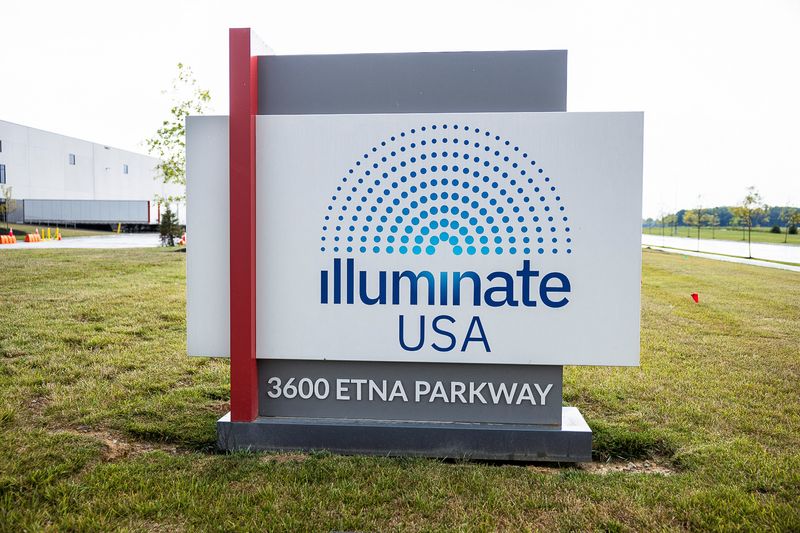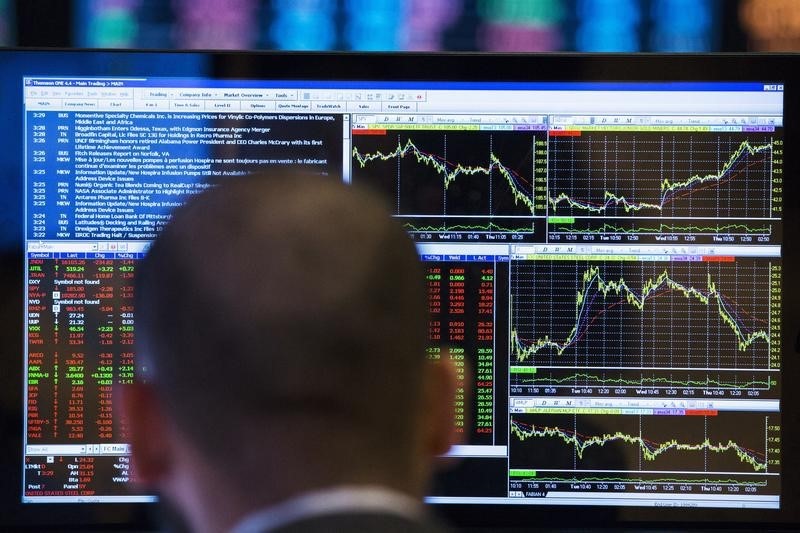By Nicola Groom
(Reuters) -Building of U.S. solar plants by Chinese companies is increasing, allowing China to dominate the emerging industry as other U.S. factories struggle to compete despite federal subsidies.
Chinese companies will have at least 20 gigawatts of annual solar panel production capacity on U.S. soil in the coming year, enough to serve about half the U.S. market, according to a Reuters analysis of company statements, government documents and interviews with eight companies. and researchers.
According to the analysis, the group includes seven companies backed by Chinese companies, including Jinko Solar, Trina Solar, JA Solar, Longi, Hounen, Runergy and Boviet.
The expected rapid increase in U.S. solar panel production by Chinese-owned companies has not been previously reported and represents a worrying outcome for President Joe Biden’s climate agenda. While his administration is eager to see new investments that create American jobs in clean energy, his administration is also desperately trying to avoid over-reliance on geopolitical rival China as the economy transitions from oil and gas to renewables.
Chinese-backed companies have clear advantages over US competitors, such as heavily subsidized supply chains for raw polysilicon and unfinished solar panels, as well as cheap government financing. Like non-Chinese companies, they also collect U.S. subsidies for clean energy production, embedded in the Inflation Reduction Act of 2022, Biden’s signature climate law.
“You have a stacked deck here. It’s hard to imagine that anyone, especially a greenfield manufacturer, can do this as quickly as a Chinese manufacturer,” said Paula Mints, founder of solar industry research firm SPV Market Research, referring to new factories.
However, she and another researcher added that the Chinese investment would help the domestic solar industry mature while creating jobs.
“They have a lot more experience building factories and setting up supply chains,” said David Feldman, a solar market researcher at the U.S. Department of Energy’s National Renewable Energy Laboratory.
Local and state officials in places where Chinese companies are setting up factories, including Texas, Arizona, Ohio and North Carolina, have welcomed the investments.
‘WE NEED AMERICAN MANUFACTURERS’
Non-Chinese manufacturers in the United States, on the other hand, have found it difficult to compete with a flood of cheap imports and are concerned about China’s outsized presence. As many as half of the announced US factories may not be built, Reuters reported last year.
US-based Convalt, for example, is struggling to bring 10 GW of US capacity online at a plant it started building in New York state in 2022.
“If we want to succeed, we need American manufacturers like Convalt to survive this onslaught of low prices, to build factories with capabilities that allow us to compete with the largest global companies, with Chinese economic ownership,” said CEO Hari Achuthan in his speech in May. testimony from the U.S. International Trade Commission, a government agency considering a request from Korea’s Hanwha Qcells and other U.S. manufacturers to impose new tariffs on certain solar imports.
Convalt’s factory would make panels plus the cells, wafers and blocks that go into them, but progress stalled a year ago when global panel prices fell 50% to levels below Convalt’s production costs, he said.
“If we didn’t have these low prices, we would have to be operational today,” Achuthan said.
The Department of Energy told Reuters that developing a domestic solar supply chain would take time and that the U.S. must rely on foreign companies for expertise.
‘COMMITMENT TO BE HERE’
Chinese companies, by far the largest suppliers of solar energy parts and electric vehicle batteries imported into the US, now account for a fifth of the solar factories announced since the US passed new climate subsidies, according to research firm Wood Mackenzie.
The United States has tried to ease its import addiction to Chinese solar products with tariffs, and has also banned goods linked to China’s Xinjiang region over forced labor concerns. It is now considering new duties on parts made in other Asian countries where Chinese manufacturers have established themselves.
Chinese companies building factories in the US have so far mainly invested in the production of modules, in which solar cells imported from Asia are assembled into panels.
For example, Longi, the world’s third-largest solar energy producer, is pumping up panels in Pataskala, Ohio through a joint venture with U.S. clean energy developer Invenergy called Illuminate USA. The five-gigawatt plant is among the largest announced since the IRA’s approval, and the company is also exploring the possibility of building a cell facility.
“Illuminate USA is an American company, majority owned by Invenergy, which owns both the facility and the land where more than 1,000 Ohioans will produce more than nine million high-quality solar panels annually at full capacity later this year,” said Illuminate spokesman Eric Heis. in a statement.
Trina, the fourth-largest global manufacturer, plans to start a five-GW panel factory in Texas this year, and is also planning a cell facility.
“We are committed to being here and we are spending a lot of time and money to make that happen,” said Mike Nelson, chief legal officer for Trina’s North American operations.
Trina said its US subsidiary is a US registered company that sources the polysilicon it uses to produce its equipment from European and US sources.
While Chinese manufacturers face opposition from some other U.S. factory owners, panel-buying U.S. developers interested in cheap supply are welcoming them.
The American Clean Power Association, a clean energy trade group, said the U.S. solar sector is attracting global and domestic investment. It says U.S.-headquartered companies account for the majority of operational and planned panel production.
The largest US manufacturers, Hanwha Qcells and Arizona-based First Solar (NASDAQ:), are pushing the US to impose new tariffs on imports of components and equipment from countries where their Chinese rivals have built factories to to supply the US

“All we’re asking for is that legitimate American manufacturers have the opportunity to compete with these giant Chinese-owned companies,” said Tim Brightbill, an attorney for the American Alliance for Solar Manufacturing Trade Committee, the group seeking new tariffs.
The group’s rivals argue that imposing tariffs on some cell imports and not others is unfair and will hinder the construction of U.S. factories.


